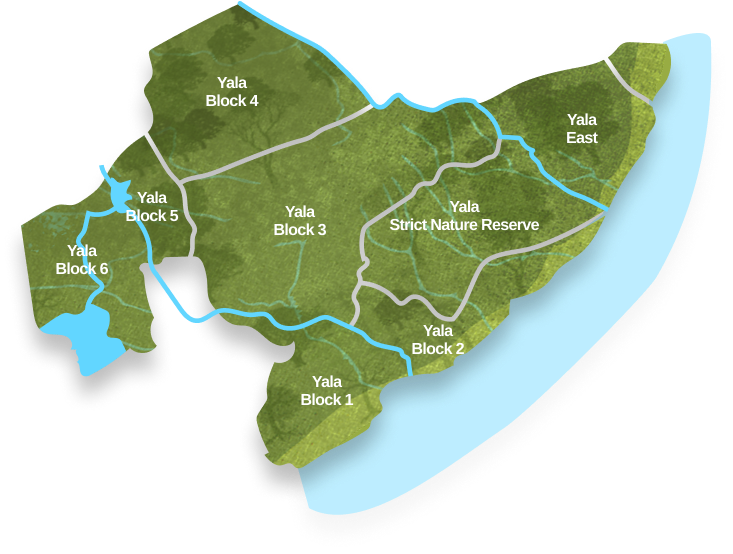Step into Yala, where the golden light of dawn ignites the dry forest and the watchful eyes of elusive leopards meet your gaze. This is a land where sprawling scrub jungles meet shimmering lagoons, and every winding path promises a breathtaking encounter, from herds of majestic elephants bathing in the river to colorful flocks of endemic birds flitting through ancient trees. Yala’s wild beauty is a story written by the rhythms of nature itself, inviting you to become part of its timeless adventure.






Yala National Park is the oldest national park in the Sri Lank, is extended over two provinces, namely Uva & Southern. In 1909 Yala was declared as Sanctuary and gain gazette as a National Park in 25 th February 1938. Yala combines a strict nature reserve with a national park. Divided into 5 blocks, the park has a protected area of nearly 130,000 hectares of land consisting of light forests, scrubs, grasslands, tanks and lagoons.
Yala is home to 44 varieties of mammal and 215 bird species. Among its more famous residents are the world’s biggest concentration of leopards, majestic elephants, sloth bears, sambars, jackals, spotted dear, peacocks, and crocodiles. The best time to visit Yala is between February and July when the water levels of the park are quite low, bringing animals into the open.
The Wild Heart of Yala
Established as a wildlife sanctuary in 1900 and a national park in 1938, Yala is part of a rich conservation legacy that protects over 1,200 square kilometers of wilderness along Sri Lanka’s southeast coast. Known officially as Ruhuna National Park, it is divided into five blocks, with Block 1 (Yala West) being the most accessible and frequently visited.
Yala’s wild soul lies in its contrasts: the dry forest meets the sea, ancient temples are hidden in the jungle, and quiet glades are teeming with life. Here, sunlight filters through canopies of Palu and Satinwood while elusive predators roam the underbrush. The park is a living theatre where every dawn brings a chance encounter—the amber gaze of a leopard at dusk, an elephant herd at a watering hole, or a flamboyance of Painted Storks wading through a lotus-filled tank.
Its ecological richness stems from its location in the arid zone, tempered by monsoonal rains and a long dry season. This climatic dynamic has sculpted a habitat that supports not only large charismatic megafauna but also myriad bird, reptile, amphibian, and invertebrate species, making Yala a true biodiversity hotspot.
What to Expect in Yala National Park
Leopard sightings are the highlight of a visit to Yala, with Block 1 offering one of the best chances in the world to observe these elusive cats in their natural habitat. Asian Elephants roam the plains in herds, while Spotted Deer, Sambar, Wild Boar, Jackals, and mongooses are commonly seen on game drives. The park is a birdwatcher’s dream, especially during the northern winter, with over 100 species recorded in a day, including the rare Black-necked Stork and many endemics.
February marks the beginning of butterfly season, adding vibrant movement to Yala’s dry landscapes. From Patanangala’s rugged coastline to the park’s tranquil lagoons and forested trails, visitors can expect a deeply immersive experience shaped by wilderness, silence, and surprise.